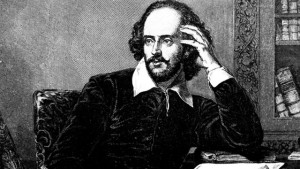 PRETORIA, South Africa, Wednesday August 12, 2015 – Was William Shakespeare high when he penned some of his immortal work? That’s what South African scientists are wondering after discovering marijuana in 400-year-old tobacco pipes dug up in the great British bard’s garden.
PRETORIA, South Africa, Wednesday August 12, 2015 – Was William Shakespeare high when he penned some of his immortal work? That’s what South African scientists are wondering after discovering marijuana in 400-year-old tobacco pipes dug up in the great British bard’s garden.
Residue from early 17th century clay pipes found in the playwright’s back yard, and elsewhere in his home town of Stratford-Upon-Avon, were analysed in Pretoria using a state-of-the-art forensic technique called gas chromatography mass spectrometry, The Independent reports.
Of the 24 fragments of pipe loaned from the Shakespeare Birthplace Trust to University of the Witwatersrand, marijuana was found in eight samples, four of which came from Shakespeare’s property.
There was also evidence of cocaine in two pipes, but neither of them had been found in the playwright’s garden.
Several kinds of tobacco were in use in the 17th century, including the North American Nicotiana (from which we get nicotine), and cocaine (Erythroxylum), which is obtained from Peruvian coca leaves.
It has been claimed that Sir Francis Drake may have brought coca leaves to England after his visit to Peru, just as Sir Walter Raleigh had brought “tobacco leaves” (Nicotiana) from Virginia in North America.
In a recent issue of Country Life magazine, Mark Griffiths stimulated interest in John Gerard’s Herbal, published in 1597 as a botanical book, which includes engraved images of several people in the frontispiece. One of them (cited as “The Fourth Man”) is identified by Griffiths as William Shakespeare, but this identification is questionable.
The engraving could well represent Sir Francis Drake, who knew Gerard.
Gerard’s Herbal refers to various kinds of “tobacco” introduced to Europe by Drake and Raleigh in the days of Shakespeare in Elizabethan England.
A link unquestionably exists between Drake and plants from the New World, notably corn, the potato and “tobacco.” Raleigh is associated with the introduction of “tobacco” to Europe from Virginia and elsewhere.
With respect to cocaine, Shakespeare may have been aware of its deleterious effects. Possibly he preferred marijuana as a weed with mind-stimulating properties.
The Independent based these suggestions on the following literary references: In Sonnet 76, Shakespeare writes about “invention in a noted weed.” This can be interpreted to mean that Shakespeare was willing to use “weed” (marijuana as a kind of tobacco) for creative writing (“invention”).
In the same sonnet it appears that he would prefer not to be associated with “compounds strange,” which could be interpreted to mean “strange drugs” (possibly cocaine).
This is not the first time that scientists have hinted the playwright was using drugs. In 2001, researchers analyzing the same pipes claimed to have found traces of cocaine and hallucinogenic drugs.
Other famous literary figures, including Coleridge and Byron, are known to have taken some inspiration from narcotics.
